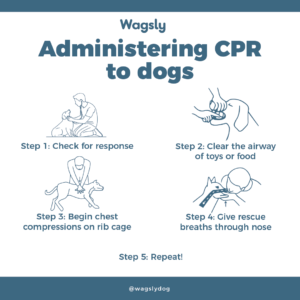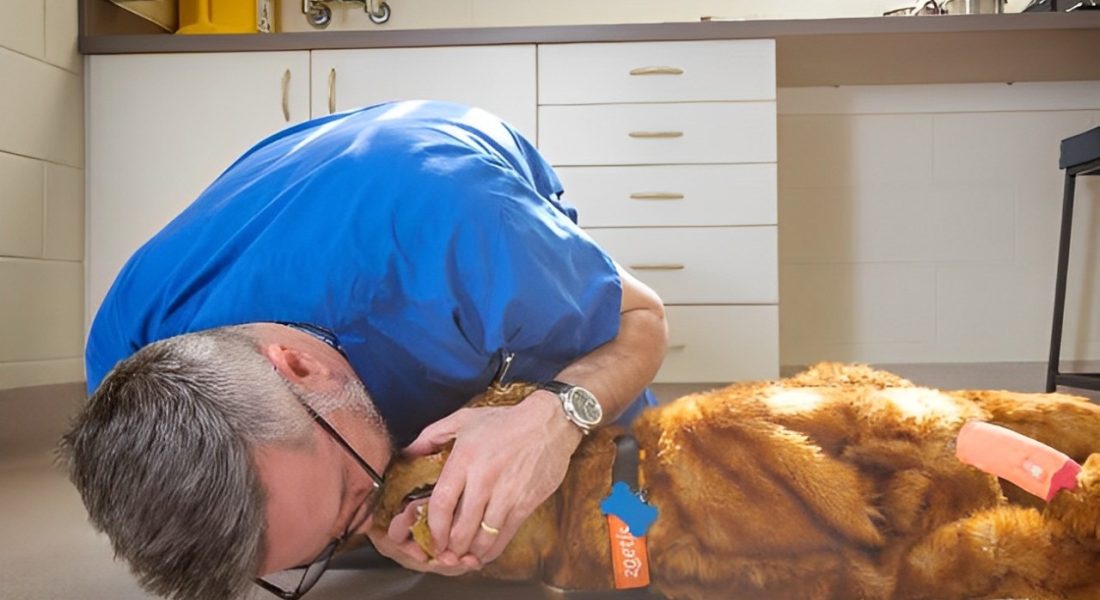Do you have a dog that has been in an emergency situation or just want to know exactly how to save your dog? If so, it is important to know how to properly administer CPR until help arrives. Knowing how to give proper first-aid care to your pup can be the difference between life and death.
This guide will teach you all of the necessary steps you need to know when giving cardio-pulmonary resuscitation (CPR) to a canine friend and provide resources if further assistance is needed. Let’s get started!
What is CPR?
Cardio-pulmonary resuscitation (CPR) is a life-saving technique used to manually pump blood and oxygen throughout the body when someone or in this case, a dog, has stopped breathing.
This can happen due to various reasons such as choking, drowning, or cardiac arrest. CPR helps to maintain vital functions and prevents brain damage while waiting for professional medical help.
How to recognize if your dog needs CPR?
It is crucial to know when your dog requires CPR so you can act quickly and confidently. Here are some common signs of distress that require immediate action:
- Unconsciousness or lack of response
- No pulse or heartbeat
- No chest movement or breathing
If you notice any of these symptoms in your dog, it is important to begin CPR immediately. Remember, every second counts in an emergency situation.
How to perform CPR on a dog?

Step 1: Check for response
Before starting CPR, you must check to see if your dog is unresponsive. Gently touch them to see if they show any sign of consciousness and watch to see if their chest is moving.
Step 2: Clear the airway
Lay your dog down on its right side and extend their neck slightly to open the airway. Check for any obstructions such as food, toys, or vomit and remove them if present.
Step 3: Begin chest compressions
Place one hand on top of the other with elbows locked and press down on your dog’s rib cage at a rate of 100-120 compressions per minute (or about 2 compressions a second). You must compress the ribcage by at least one-third.
Step 4: Give rescue breaths
After every 30 compressions, give two rescue breaths by closing your dog’s mouth and softly blowing air into their nostrils. Make sure to watch for the chest rising and falling.
Step 5: Repeat until help arrives
Continue performing cycles of 30 compressions and two rescue breaths until your dog revives, or professional help arrives.
Remember, performing CPR can be physically demanding, so if possible, take turns with another person to avoid exhaustion.
The importance of seeking professional guidance
While CPR can be life-saving, it is important to seek professional guidance and assistance after performing basic first aid. This is especially true if your dog has been unconscious for more than five minutes or if they have stopped breathing due to choking on an object.
It is also important to remember that CPR may not always be successful and seeking professional help can improve your dog’s chances of survival. Call your veterinarian or the nearest animal hospital immediately for further instructions and transport your dog safely to receive proper medical care.
Provide emotional and physical support after administering CPR
CPR can be a traumatic experience for both you and your dog, even if it is successful. It is important to provide emotional and physical support for your pup after administering CPR. This includes giving them water, keeping them calm, and monitoring their vital signs.
If your dog remains unconscious or has difficulty breathing despite CPR, continue performing the steps until professional help arrives. Stay calm and reassure your dog that they are not alone.
Additionally, take care of yourself and seek support if needed. Administering CPR to your pup can be emotionally taxing, and it is important to process your feelings and take care of yourself as well.
Helping your pet recover post-CPR
After your dog receives professional medical care, it is essential to follow the veterinarian’s instructions for their recovery. This may include administering medication, providing a comfortable and quiet environment, and monitoring their behavior.
Some dogs may experience temporary or permanent damage to vital organs due to lack of oxygen during an emergency situation. It is important to provide proper care and support for your dog during their recovery process.
Always keep an eye on your dog’s behavior and seek further medical assistance if you notice any concerning symptoms. With proper care, love, and attention, your pup can make a full recovery after CPR.
Conclusion
In conclusion, knowing how to administer CPR to your dog can be life-saving in an emergency situation. It is important to recognize the signs that your dog needs CPR and to act quickly and confidently.
Remember to seek professional help and provide emotional and physical support for your pup after administering CPR. With proper care, love, and attention, you can help your furry friend recover and thrive. Remember to stay calm and focused during an emergency, and always prioritize your dog’s safety and well-being above all else.




